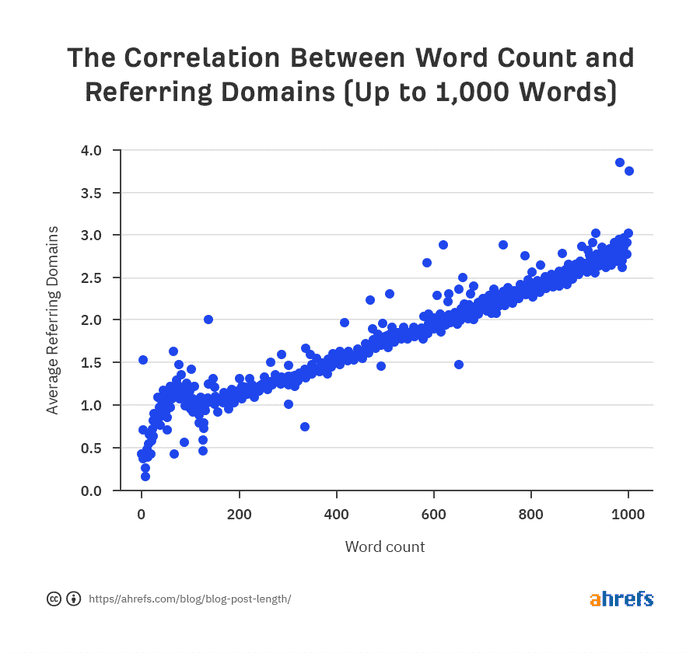Investing in thought-leadership content marketing is not a meager investment, but one that is sure to pay off.

Even if you’re posting regularly and have creative social efforts, it has become difficult to cut through the noise and get noticed by consumers. Repeatedly spending on ads but not getting your ROI is the definition of insanity.
What should businesses do?
Better advertising is the answer, but it's becoming harder to find your audience now that Google is phasing out cookies and Apple is imposing new privacy protections. There are services to help you work around tracking and attribution obstacles, but these tools only work if you already have a base of consumers flowing to your site.
Getting people to your site is the only way to acquire the coveted first-party data.
If you’re a certain kind of brand you can carve a path to capture and own your consumer data through content marketing. But before considering content marketing and if it’s right for you, you’ll need to have the following bases covered:
• Clean, effective UX website with a Shopify back-end
• Email marketing set up
• Social media set up
• Budget for advertising
• Paid ads running so you can test quickly
Once you have those essentials, you can consider content marketing. Content can mean a lot of things, but I’m specifically talking about thought leadership content.
The first thing to ask yourself is "Do I have anything good to say?" It’s not enough to just reach consumers–you have to engage with them to ultimately drive them to your site. Then, if you can position yourself as an authority to a targeted audience that cares about what you have to say, you’ll be able to influence their buying decisions.
This is the classic top-of-funnel marketing technique, and it works.
I’m not talking about putting up a blog post every now and again. I’m talking about publishing long-form articles, weekly or bi-monthly at least, that are optimized for search, and putting ad dollars behind it.
Why do this?
It is becoming harder for marketers to advertise to consumers as Big Tech’s consumer privacy protections have gone into full force. Data sharing is no longer a reliable mechanism for targeting potential new users. You’ve felt this if your posts have not performed as expected on Facebook (excuse me, Meta) properties.
Is long-form content for you?
If you’re burning to tell people something they’ve never heard before, correct a misconception or help with a problem, then content is for you. The idea here is not to immediately sell anyone on your product. The idea is to create an informed space–that answers a question, enriches, educates and entertains an audience–so that you become a trusted source.
Some brands are doing an amazing job of this.
Four Sigmatic, maker of mushroom coffee, has positioned itself as an authority on the health benefits of mushrooms. Not only does the company inform consumers on what different mushrooms such as chaga and reishi are for and what they taste like, they also put out relatable content with deep empathy for their readers. Articles such as “Why am I so tired: 5 ways to stop being sleepy” have great ranking keywords. All of Four Sigmatic's articles are hosted on a Magazine tab on the brand's website.
Healthy ramen brand Immi is speaking to a very niche group–young, first-gen Asian-Americans as well as better-for-you ramen lovers. Its content is uniquely catered to culture and community. One piece focuses on all the different kinds of Asian candy company employees and their friends loved as kids–it has nothing to do with ramen at all! Some content is reserved for a private community; Immi built a hefty following on their Facebook group and loaded it with authentic, off-the-cuff content as a pre-launch campaign.
This top-of-funnel approach does have particular requirements to be effective, and none actually are concerned with the content itself. They have to do with getting your content to come up on the first page of Google search, so focus on:
1. Keywords
2. Link building
3. Publishing
This is a crazy statistic: 95% of all search queries in the U.S. get fewer than 10 searches per month.
Keywords are popular search term queries. You want to do your research here to include keywords that are getting a decent number of searches, but with a reasonable difficulty score for a chance at a top spot on Google. These will be long-tail keywords and you want them because they get a higher rate of conversion.
Link building is linking and creating backlinks from other websites back to you to build authority and higher rank. A natural way to do this is to guest post on a related publication or link to a podcast interview of you.
Where you host your blog matters, and publishing has to be consistent and frequent. For CPG brands that have many product pages it is better to put a blog on a sub-domain to keep the two sites separate and easier to manage.
Optimal word count
Long-form articles perform better, but more words for the benefit of more words is not the point. The point is more opportunities for long-tail keywords and backlinks while maintaining the reader. The sweet spot is 1,000 to 2,000 words because, after that, people just stop reading.
Below is a cool chart on the correlation between word count and backlinks.

The hard part is writing

Everything I’ve mentioned in the last two posts so far is not the hard part. The hard part is writing. I can tell you from personal experience, you’re not as good of a writer as you think you are. But even if you are incredible, consistently putting out content–weekly is best–is like staying on a diet into the new year: really, really hard.
Hire out subject matter experts to write your content for you
It's a lot of work putting out content that is worthy of reader’s time. I know this firsthand. If I had someone else to write it for me, it’d be a huge load-off.
Brands are not being inauthentic by hiring writers. The key is to find and manage experts in the field and subject matter you play in, and there are agencies that can help in this search.
For example, I recently learned of Growth Machine, a company that can do any and all parts of SEO, content creation and management for brands.
Below is what its full suite of services provides:
1. Source and manage subject matter expert writers
2. Create content topic strategy
3. Editorial review
4. Link building
5. Keyword research
6. Publishing
Jennifer Barney is an advisor and consultant to food and ag businesses at 3rd & Broadway. She previously founded the almond butter brand Barney Butter.
Have some big ideas or thoughts to share related to the natural products industry? We’d love to hear and publish your opinions in the newhope.com IdeaXchange. Check out our submission guidelines.
About the Author(s)
You May Also Like




